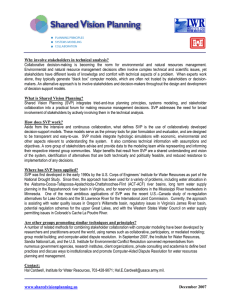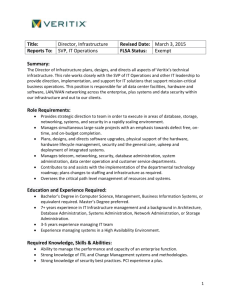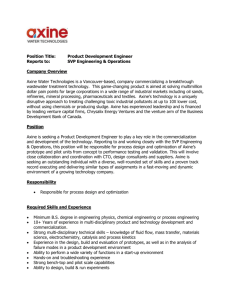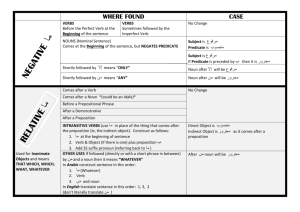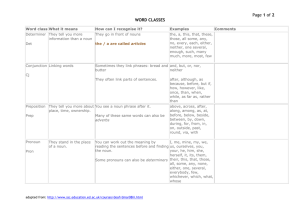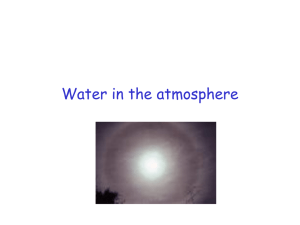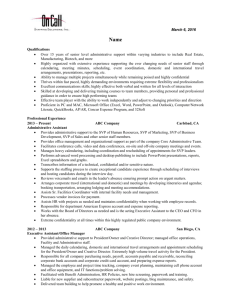Brief Grammar Review
advertisement
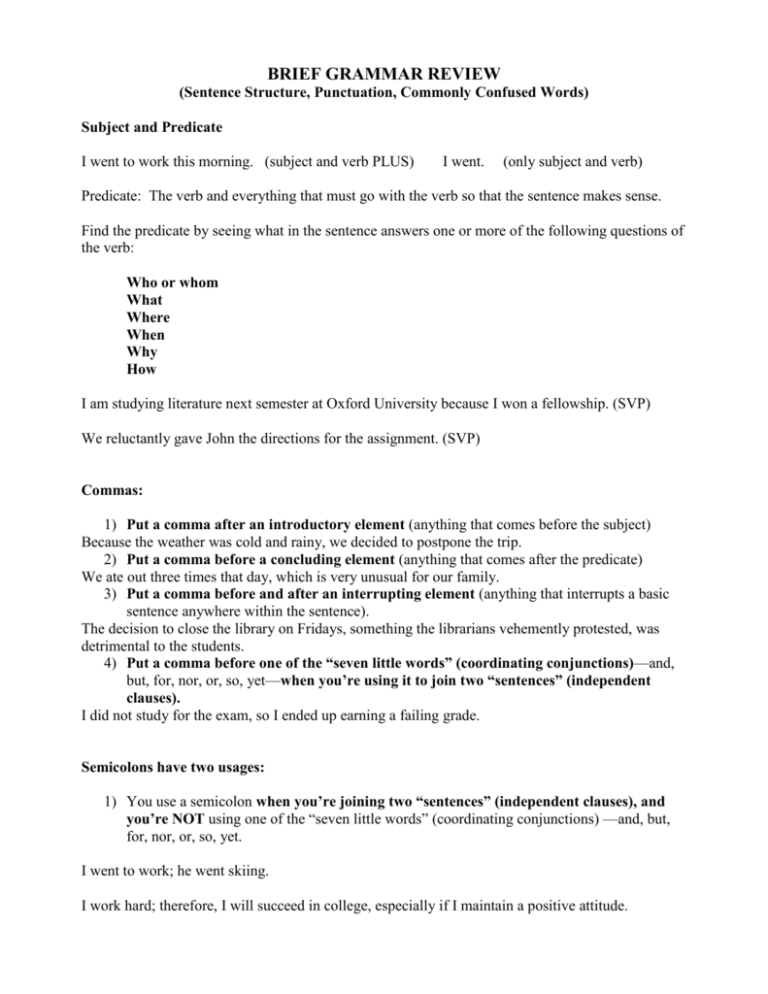
BRIEF GRAMMAR REVIEW (Sentence Structure, Punctuation, Commonly Confused Words) Subject and Predicate I went to work this morning. (subject and verb PLUS) I went. (only subject and verb) Predicate: The verb and everything that must go with the verb so that the sentence makes sense. Find the predicate by seeing what in the sentence answers one or more of the following questions of the verb: Who or whom What Where When Why How I am studying literature next semester at Oxford University because I won a fellowship. (SVP) We reluctantly gave John the directions for the assignment. (SVP) Commas: 1) Put a comma after an introductory element (anything that comes before the subject) Because the weather was cold and rainy, we decided to postpone the trip. 2) Put a comma before a concluding element (anything that comes after the predicate) We ate out three times that day, which is very unusual for our family. 3) Put a comma before and after an interrupting element (anything that interrupts a basic sentence anywhere within the sentence). The decision to close the library on Fridays, something the librarians vehemently protested, was detrimental to the students. 4) Put a comma before one of the “seven little words” (coordinating conjunctions)—and, but, for, nor, or, so, yet—when you’re using it to join two “sentences” (independent clauses). I did not study for the exam, so I ended up earning a failing grade. Semicolons have two usages: 1) You use a semicolon when you’re joining two “sentences” (independent clauses), and you’re NOT using one of the “seven little words” (coordinating conjunctions) —and, but, for, nor, or, so, yet. I went to work; he went skiing. I work hard; therefore, I will succeed in college, especially if I maintain a positive attitude. 2) You also use a semicolon to separate elements in a series with internal punctuation. We elected the following officers to our club: Jose, President; Susan, Vice-President; and Jerome, Secretary. Colon: Used to introduce an explanation, a list, or sometimes a quotation. S V P: one or more words, or a list, or another SVP. I work at one of the best colleges in the area: El Camino College. (explanation) He was a sweetheart: a real knight in shining armor. (explanation) I like many forms of music: reggae, jazz, and punk. (list) SVP: X, X, X. My mother and I went shopping: we needed baby food and diapers. (explanation) SVP: SVP. He said, “Will you marry me?” SV, “SVP?” BUT He said the four words I’d waited all of my life to hear: “Will you marry me?” SVP: “SVP?” Apostrophe: used to show possession. His hers theirs mine its ours yours (possessive pronouns do NOT use apostrophes) it’s=it is When you use a plural form of a noun, often you’ll put the apostrophe after the s; when you use a singular noun, you’ll put the apostrophe before. The boys’ football. The boy’s football. The babies’ pacifier The baby’s pacifier With a collective noun, you put the apostrophe before the s. The men’s football team. The children’s game. Dashes: use when you interrupt a sentence with a series; you can also use a dash in place of parentheses. We listen to many forms of music—reggae, jazz, rock, and hard core punk—because we like their varying effects. The man stole three items—a TV, a VCR, and a computer—from Miss Smith’s house. 2 Women of the nineteenth century—a time when sexism was the social norm—were often subjugated to physical abuse by male relatives. Hyphens: use to join two or more words that are not regular adjectives to modify a noun Sister-in-law three-story house BUT: a nice, pleasant house. a come-as-you-are invitation the young, courageous soldier a five-year-old boy a quickly written essay Punctuation with Quotation Marks: Commas and periods go inside She said, “Let’s try that experiment one more time.” He pleaded, “Please listen to me,” but she refused to hear him. Semicolons and colons go outside She said, “Hello”; he said, “Goodbye.” The professor assigned Susan Glaspell’s short story “A Jury of Her Peers”: a compelling narrative about a woman who murders her husband. Commonly Confused Words: Its it’s It’s = it is Its = possessive In the show, its eyes were white. It’s his attitude that really makes him attractive. Affect (most commonly used as a verb) Effect (most commonly used as a noun) You affected me. You had a strong effect on me. BUT: We must effect a change if we want to see results. (effect is also a verb meaning to produce or bring about) Farther Further Far: distance We needed to walk farther to find the store. Further: degree. We need to discuss this situation further. Who versus Whom Who—subject such as he, she, they, etc. He is the man who whom I admire most. He is the man who whom stole my purse. Whom—object such as him, her, them, etc. 3

